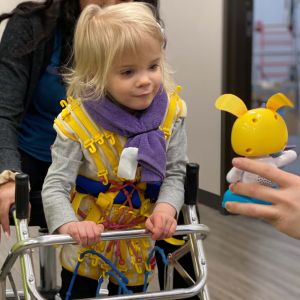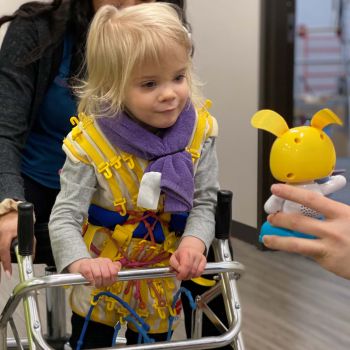INTENSIVE PHYSICAL THERAPY


TheraSuit Method
Oxford’s industry-leading model of intensive physical therapy combines conventional and non-conventional techniques to facilitate rehabilitation. Our approach focuses on retraining the body and brain from a neurological standpoint compared to the traditional muscular approach. Therapy sessions are one on one and last three hours. These long therapy periods allow our therapists to focus on your specific needs without interruption.
The Oxford physical therapy approach starts with the basics. Patients are trained to use muscles correctly, rather than compensating for muscle groups that are not functioning properly. Our goal goes beyond regaining mobility. We strive to help patients regain proper mobility, so there are no lurking issues that may cause problems in the future.
The History of Suit Therapy
Originating in the Russian space program, the TheraSuit Method has had a fascinating journey to being able to help neurological disabilities.
The TheraSuit Method
The TheraSuit Method, one of the methods Oxford uses to maximize healing potential, involves an approach that looks at how the body responds to neurological inputs.
How Does it Work?
Intensive physical therapy, also known as intensive rehabilitation, is a type of physical therapy that involves a higher frequency of sessions and a more intense level of therapy than traditional physical therapy.
The main goal of intensive physical therapy is to achieve maximum functional improvement quickly. The treatment plan is designed to push the patient to their limits and maximize their potential for recovery. It may include exercises to improve strength, flexibility, balance, and coordination, as well as activities of daily living training, and education on injury prevention.
Physical therapists will use advanced techniques that have been proven to be effective in improving muscle strength, reducing spasticity, and enhancing the patient’s ability to perform daily activities.
What Do Sessions Look Like?
Patients beginning intensive physical therapy with The Oxford Center will come in for an initial assessment with one of our skilled physical therapists. In this initial assessment, we will work with the patient to pinpoint areas of concern and develop a plan to eliminate that concern. Our unique approach allows us to target the root cause of your symptoms, rather than just making the symptom.
You will be paired with a Doctor of Physical Therapy or a Physical Therapy Assistant to work with you one-on-one during each of your sessions. Our intensive physical therapy sessions are longer and/or more frequent than typical physical therapy sessions. Sessions will last for about three hours and allow our therapists to focus on your specific needs without interruption. Contact us today to discuss how we can help you improve your life.
“The Oxford Center has changed our lives. From the first time we walked through the door in December of 2019, we have felt at home. Our daughter Grace was diagnosed with Cerebral Palsy at age 3 and Autism at age 5. We have seen such amazing progress since starting our journey here at The Oxford Center, first with HBOT and intensive physical therapy, and now with ABA…”
Conditions Treated
- Cerebral Palsy
- Developmental Delay
- Traumatic Brain Injury
- Post Stroke (CVA)
- Ataxia
- Athetosis
- Spasticity (increased muscle tone)
- Sport Injuries
- Down Syndrome and other Genetic Disorders
- Sensory-Processing Disorder
- Hypotonia (low muscle tone)
- Stroke Victims
BENEFITS OF INTENSIVE PHYSICAL THERAPY AND THE THERASUIT METHOD
- Stimulates the brain to retrain central nervous system
- Restores ontogenic development
- Provides external stabilization and supports weak muscles
- Normalizes muscle tone
- Aligns the body to close to normal as possible
- Provides dynamic correction
- Normalizes (corrects) gait pattern
- Improves proprioception
- Reduces pathological reflexes
- Restores proper patterns of movement and support
- Influences vestibular system
- Provides tactile and sensory stimulation
- Improves speech production and fluency through head control and trunk support
- Accelerates the progress of newly learned movements and functional skills
- Improves balance
- Improves coordination
- Decreases uncontrolled movements in ataxia and athetosis
- Improves body and spatial awareness
- Provides resistance to strong muscles to further enhance strengthening
- Promotes development of both fine and gross motor skills
- Improves bone density
- Helps to decrease contractures
- Helps improve hip alignment through vertical loading over the hip joint
- Loads the body with gravity-type pressures